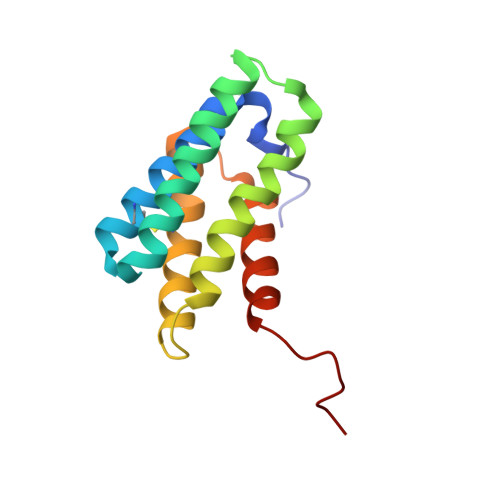Diversified Structural Basis of a Conserved Molecular Mechanism for pH-Dependent Dimerization in Spider Silk N-Terminal Domains.
Otikovs, M., Chen, G., Nordling, K., Landreh, M., Meng, Q., Jornvall, H., Kronqvist, N., Rising, A., Johansson, J., Jaudzems, K.(2015) Chembiochem 16: 1720-1724
- PubMed: 26033527
- DOI: https://doi.org/10.1002/cbic.201500263
- Primary Citation of Related Structures:
2MX8, 2MX9 - PubMed Abstract:
Conversion of spider silk proteins from soluble dope to insoluble fibers involves pH-dependent dimerization of the N-terminal domain (NT). This conversion is tightly regulated to prevent premature precipitation and enable rapid silk formation at the end of the duct. Three glutamic acid residues that mediate this process in the NT from Euprosthenops australis major ampullate spidroin 1 are well conserved among spidroins. However, NTs of minor ampullate spidroins from several species, including Araneus ventricosus ((Av)MiSp NT), lack one of the glutamic acids. Here we investigate the pH-dependent structural changes of (Av)MiSp NT, revealing that it uses the same mechanism but involves a non-conserved glutamic acid residue instead. Homology modeling of the structures of other MiSp NTs suggests that these harbor different compensatory residues. This indicates that, despite sequence variations, the molecular mechanism underlying pH-dependent dimerization of NT is conserved among different silk types.
Organizational Affiliation:
Latvian Institute of Organic Synthesis, Aizkraukles 21, LV-1006 Riga (Latvia).














